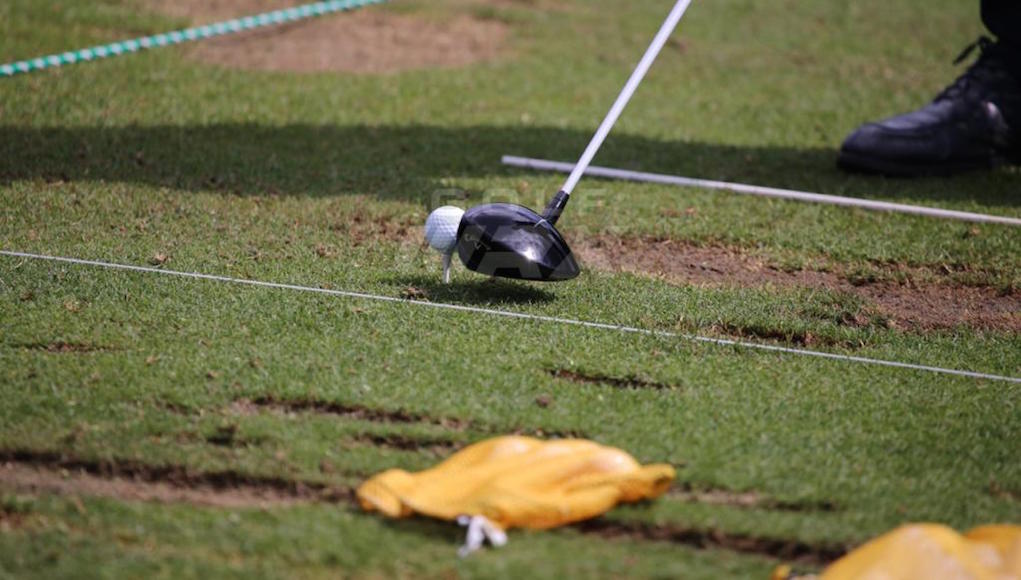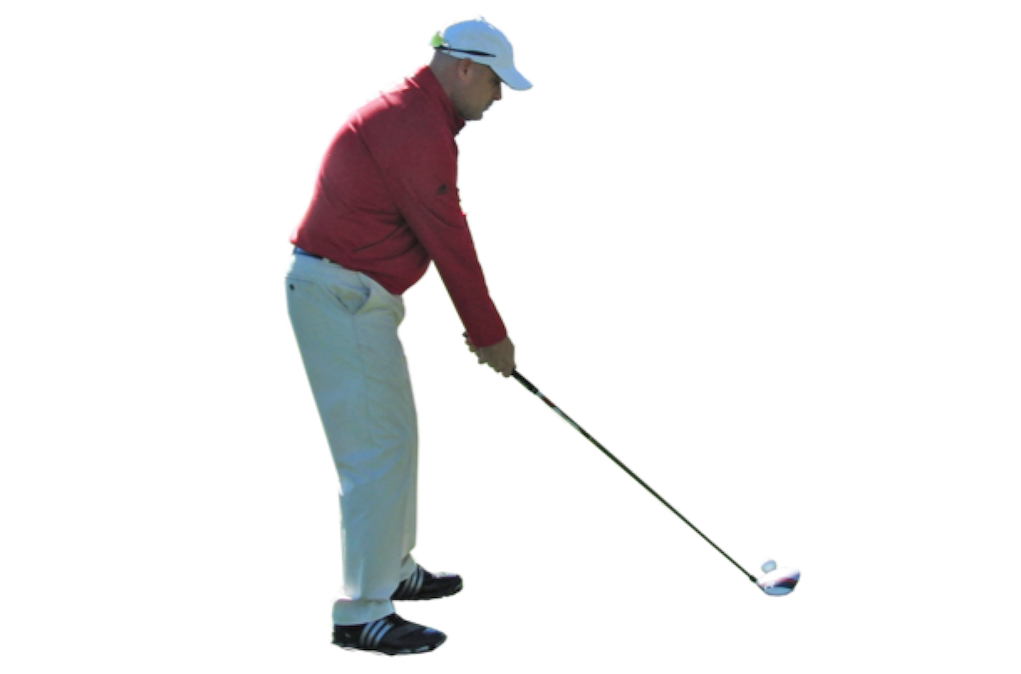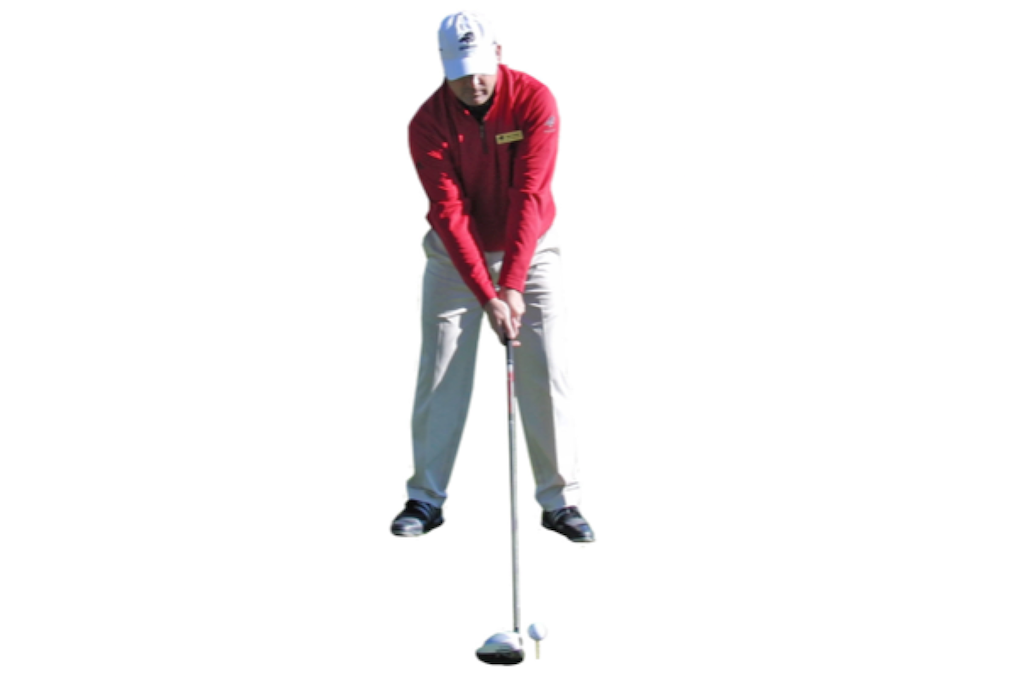Instruction
Don’t let an alignment issue become a major mechanical problem

There’s a good chance you’re just like the majority of golfers in the world. You’re looking for a complex solution to your golf swing problems, even though it’s completely unnecessary.
For some reason, the majority of golfers resist laying clubs on the ground to check their alignment, and even fewer look to see if their grip has strengthened or weakened accidentally. It makes no sense, either. The best golfers in the world check their alignment and grip all the time, yet avid golfers, who spend a lot of money trying to emulate them, almost never do.
In golf, a tiny mistake can become incrementally worse, eventually causing a major issue. For example, very few beginners start playing golf aiming 40 yards left of the target. They started aiming 2-5 yards left to correct a small slice, and began aiming farther and farther left as the slice got worse until their swing became drastically over-the-top, and their slice completely uncontrollable. This could have been solved by correcting the alignment error in the first place.
When you’re struggling, it should be your goal to notice swing flaws before they become huge problems. Because if you wait too long, you could fall into a familiar pattern. “I’m going to stop playing, take a lesson, and really work on my golf swing on the range,” I’ve heard a lot of golfers say. Unfortunately, they rarely make it back to the course with the same enthusiasm.
The older I get, the more I appreciate what Jack Nicklaus did at the beginning of his golf seasons. He took a lesson from his teacher, Jack Grout, and told him one thing, “Let’s start from the beginning.” And from there, they worked on the basics — grip, stance, posture, balance, alignment — to get his rusty game moving in the right direction.
The next time you’re on the range, I’d like you to re-examine your setup, alignments, grip, balance and posture. If you’re a regular GolfWRX reader, you know by now that the alignment of the body is individual, and can be altered by the club you are using. So just make sure you are in the ballpark of your intended target.
Secondly, take the time to make sure you are balanced from both front-to-back (left foot to right foot) and from right-to-left (heel to toe). You’d be amazed how many people are grossly off-balance at address, and this causes balance issues throughout the golf swing.
Down-the-Line (DTL) View of My Address Position

Front-On (FO) View of My Address Position
I promise you that if you take two photos of your golf swing at address, like I did above, you will notice a few things you need to work on right from the start. Remember your golf swing is like a ladder; everything is a chain reaction, building on the previous moves and positions. Therefore, start from address and work forward to get yourself out of a slump. Those swing theories or quick fixes you’ve been hearing about from your golfing buddies… leave those to a reputable instructor in your area.
- LIKE158
- LEGIT15
- WOW2
- LOL1
- IDHT1
- FLOP3
- OB2
- SHANK8
Instruction
Clement: Laid-off or perfect fade? Across-the-line or perfect draw?

Some call the image on the left laid off, but if you are hitting a fade, this could be a perfect backswing for it! Same for across the line for a draw! Stop racking your brain with perceived mistakes and simply match backswing to shot shape!
- LIKE0
- LEGIT0
- WOW0
- LOL0
- IDHT0
- FLOP0
- OB0
- SHANK1
Instruction
The Wedge Guy: The easiest-to-learn golf basic

My golf learning began with this simple fact – if you don’t have a fundamentally sound hold on the golf club, it is practically impossible for your body to execute a fundamentally sound golf swing. I’m still a big believer that the golf swing is much easier to execute if you begin with the proper hold on the club.
As you might imagine, I come into contact with hundreds of golfers of all skill levels. And it is very rare to see a good player with a bad hold on the golf club. There are some exceptions, for sure, but they are very few and very far between, and they typically have beat so many balls with their poor grip that they’ve found a way to work around it.
The reality of biophysics is that the body moves only in certain ways – and the particulars of the way you hold the golf club can totally prevent a sound swing motion that allows the club to release properly through the impact zone. The wonderful thing is that anyone can learn how to put a fundamentally sound hold on the golf club, and you can practice it anywhere your hands are not otherwise engaged, like watching TV or just sitting and relaxing.
Whether you prefer an overlap, interlock or full-finger (not baseball!) grip on the club, the same fundamentals apply. Here are the major grip faults I see most often, in the order of the frequency:
Mis-aligned hands
By this I mean that the palms of the two hands are not parallel to each other. Too many golfers have a weak left hand and strong right, or vice versa. The easiest way to learn how to hold the club with your palms aligned properly is to grip a plain wooden ruler or yardstick. It forces the hands to align properly and shows you how that feels. If you grip and re-grip a yardstick several times, then grip a club, you’ll see that the learning curve is almost immediate.
The position of the grip in the upper/left hand
I also observe many golfers who have the butt of the grip too far into the heel pad of the upper hand (the left hand for right-handed players). It’s amazing how much easier it is to release the club through the ball if even 1/4-1/2″ of the butt is beyond the left heel pad. Try this yourself to see what I mean. Swing the club freely with just your left hand and notice the difference in its release from when you hold it at the end of the grip, versus gripping down even a half inch.
To help you really understand how this works, go to the range and hit shots with your five-iron gripped down a full inch to make the club the same length as your seven-iron. You will probably see an amazing shot shape difference, and likely not see as much distance loss as you would expect.
Too much lower (right) hand on the club
It seems like almost all golfers of 8-10 handicap or higher have the club too far into the palm of the lower hand, because that feels “good” if you are trying to control the path of the clubhead to the ball. But the golf swing is not an effort to hit at the ball – it is a swing of the club. The proper hold on the club has the grip underneath the pad at the base of the fingers. This will likely feel “weak” to you — like you cannot control the club like that. EXACTLY. You should not be trying to control the club with your lower/master hand.
Gripping too tightly
Nearly all golfers hold the club too tightly, which tenses up the forearms and prevents a proper release of the club through impact. In order for the club to move back and through properly, you must feel that the club is controlled by the last three fingers of the upper hand, and the middle two fingers of the lower hand. If you engage your thumbs and forefingers in “holding” the club, the result will almost always be a grip that is too tight. Try this for yourself. Hold the club in your upper hand only, and squeeze firmly with just the last three fingers, with the forefinger and thumb off the club entirely. You have good control, but your forearms are not tense. Then begin to squeeze down with your thumb and forefinger and observe the tensing of the entire forearm. This is the way we are made, so the key to preventing tenseness in the arms is to hold the club very lightly with the “pinchers” — the thumbs and forefingers.
So, those are what I believe are the four fundamentals of a good grip. Anyone can learn them in their home or office very quickly. There is no easier way to improve your ball striking consistency and add distance than giving more attention to the way you hold the golf club.
More from the Wedge Guy
- The Wedge Guy: Golf mastery begins with your wedge game
- The Wedge Guy: Why golf is 20 times harder than brain surgery
- The Wedge Guy: Musings on the golf ball rollback
- LIKE87
- LEGIT13
- WOW6
- LOL1
- IDHT0
- FLOP4
- OB1
- SHANK8
Instruction
Clement: Stop ripping off your swing with this drill!

Not the dreaded headcover under the armpit drill! As if your body is defective and can’t function by itself! Have you seen how incredible the human machine is with all the incredible feats of agility all kinds of athletes are accomplishing? You think your body is so defective (the good Lord is laughing his head off at you) that it needs a headcover tucked under the armpit so you can swing like T-Rex?
- LIKE0
- LEGIT2
- WOW2
- LOL0
- IDHT0
- FLOP0
- OB0
- SHANK2
-

 19th Hole2 weeks ago
19th Hole2 weeks agoDave Portnoy places monstrous outright bet for the 2024 Masters
-

 19th Hole5 days ago
19th Hole5 days agoJustin Thomas on the equipment choice of Scottie Scheffler that he thinks is ‘weird’
-

 19th Hole3 weeks ago
19th Hole3 weeks agoTiger Woods arrives at 2024 Masters equipped with a putter that may surprise you
-

 19th Hole4 days ago
19th Hole4 days ago‘Absolutely crazy’ – Major champ lays into Patrick Cantlay over his decision on final hole of RBC Heritage
-

 19th Hole2 weeks ago
19th Hole2 weeks agoTwo star names reportedly blanked Jon Rahm all week at the Masters
-

 19th Hole2 weeks ago
19th Hole2 weeks agoReport: LIV Golf identifies latest star name they hope to sign to breakaway tour
-

 19th Hole2 weeks ago
19th Hole2 weeks agoNeal Shipley presser ends in awkward fashion after reporter claims Tiger handed him note on 8th fairway
-

 19th Hole1 week ago
19th Hole1 week agoBrandel Chamblee has ‘no doubt’ who started the McIlroy/LIV rumor and why

















Good read
Jun 27, 2016 at 10:50 pm
I love the simplicity here. John Daly talks about this all the time. While he could’ve done so much more with his career, when he is interviewed its always about finding simple solutions to your problems…just as the author has done above. Get away from all this other crap out there
Rob
Jun 24, 2016 at 6:18 pm
I went through this just a week ago with my teacher. I had been trying to hit the ball a little lower. In doing so, I had moved the ball too far back in my stance, had strengthened the right hand grip and opened my shoulders. All in all, I was hitting everything left on left and had no idea why. About 20 minutes of work and I “felt” like I had a weak grip and was setting up closed, but the ball was tracking right down the target line. It’s amazing how quickly we can get out of whack.
Tank
Jun 24, 2016 at 10:40 am
100%.. puts the other writters on this website to shame… Finally someone who gets it
I love S Mizzle
Jun 23, 2016 at 11:22 pm
Are you reaching a bit? And should our spine look that rounded over? (Im a rookie)
Me Nunya
Jun 25, 2016 at 11:50 pm
I get it. I get it.
Emmizzle
Jun 23, 2016 at 3:02 pm
AGREED. nice article
Dennis clark
Jun 23, 2016 at 2:52 pm
You hit the nail on the head pro!